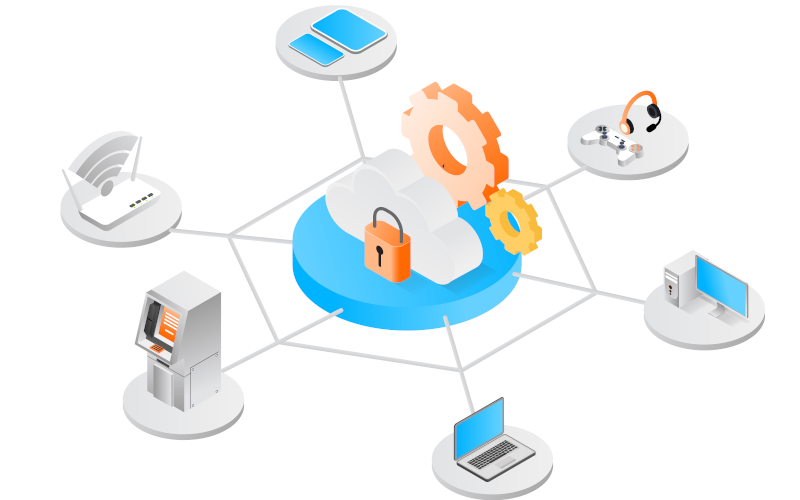
The M-Bus protocol is a common protocol in the industry in general, it’s daily use can be related to devices for measurements of electricity, gas, water, heating, etc. This protocol has a wireless variant called Wireless M-Bus and works through a hierarchical master/slave system, standardized according to EN13757.

IoT networks are very useful for everyday life, but their use is not limited only to this type of environment; there are industrial environments where this type of networks can benefit connectivity between industrial devices and provide capabilities that other types of networks could not. The 3rd Generation Partnership Project or 3GPP developed the NB-IoT protocol, a protocol for when networks with higher performance, higher speed and high interconnectivity capacity between devices are required. This protocol can work both in IoT devices and in IoT devices in the industrial environment (IIoT).

OSINT (Open-Source Intelligence) is a technique that focuses on the collection, evaluation and analysis of public information through different methods and techniques, with the objective of discovering vulnerabilities or collecting sensitive information that could become threats.
It should be emphasized that the data collection is not called OSINT, it would be raw information. Once this information is evaluated and treated, it could be said that we are really talking about open-source intelligence (OSINT).
Initially it has been used in the military and government sector. Its use in OT, with disciplines such as SIGINT (Signals Intelligence), IMINT (Imagery Intelligence) or even 'Sock Puppets' (fake profiles or intruders in technical forums) is making havoc due to the criticality of this equipment. Disinformation or the compilation of sensitive industrial technical information are some of the serious consequences that this sector is exposed to.

The evolution of communications in society is also having an impact on the industrial world. With the arrival of 5G, many industrial companies have considered migrating some of their communications to take advantage of the characteristics of this new mobile communications band, such as the reduction of latency times, the increase in connection speed or the exponential increase in the number of devices that can be connected to the network. These characteristics fit perfectly with the industrial mentality, where there are a multitude of interconnected devices between which there cannot be a communication cut due to the criticality of the processes they implement.
This article aims to comment, in addition to all the advantages that 5G provides to the industry, the different uses that can be given currently and the complexity of implementing these communications in some devices for subsequent deployment in the industry. Also, to specify possible vulnerabilities in communications using 5G networks.

External access provides great convenience to workers, as it allows them to access any industrial equipment deployed in the field from the office or even further away. However, this type of access can pose a number of security problems for the company. This article reviews the main problems and how to solve them.

IDSs are passive elements that are in our network to ensure its security, but what would happen if all our communications were encrypted, or would this protection measure be enough to ensure that my network is protected? These questions and more will be discussed in the following article to provide solutions and advice focused on industrial environments.

The Industrial Internet of Things (IIoT) has experienced considerable growth in recent years, providing crucial improvements. However, it also has some limitations in terms of consumption, security, cost or scalability. In this blog, we will see how the appearance of LoRaWAN in this area can solve part of those limitations.

The growth of cyberattacks suffered in the industrial world is very worrying, since it is a sector that until recently the vast majority of its devices were not connected to the Internet, so the implementation of cybersecurity had never been thought of.
But with Industry 4.0 all that has changed, since almost all devices are interconnected or have Internet connection creating many advantages, but also some problem.
That is why experts in this field have seen the need to improve and implement cybersecurity in the industry, for this they have created different models and applications. Some of these can be seen in the following article.

En este estudio, se expone brevemente el origen y evolución de la amenaza ransomware LockBit 3.0, a través del análisis de varias muestras maliciosa, con el objetivo de facilitar la información necesaria para poder identificar las características propias de este malware, su comportamiento y técnicas empleadas, permitiendo así una mejor identificación y respuesta ante ella.

There are areas where the deployment of an industrial plant requires satellite communications such as those provided by VSAT (Very-Small-Aperture Terminal) technology. This technology allows the exchange of information through an antenna made up of different terminals, installed in remote locations with the connection capacity of a central hub, thanks to a satellite. Obviously, this technology has a cost that not all companies can afford, but it covers coverage needs in places where there are no other communication options. This type of communications is not only widespread in the industry, but its also sometimes used by banks to perform banking transactions at ATM’s. These communications are not so well known by many experts in the industrial sector, and it can be a good opportunity to bridge the knowledge gap so that readers can learn more about the advantages and disadvantages of VSAT communications.



